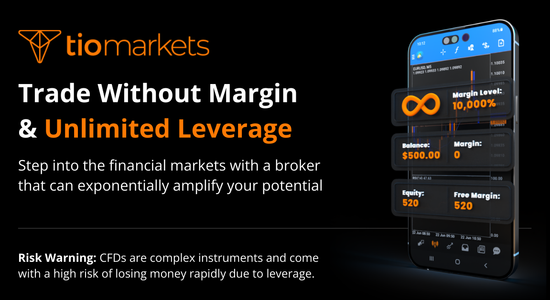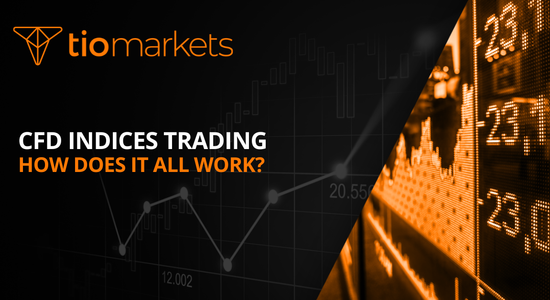Top trading styles and strategies for 2022
BY Chris Andreou
|December 15, 2021Just because one trading style or strategy works well for one person, it doesn’t mean that it will work well for someone else.
There are different styles and strategies of trading and most beginners bounce from one strategy to the next. Trading in an inconsistent way can contribute to undesirable results.
So if you want to trade better in 2022, pick one style that suits your personality and tolerance to risk.
There are two common types of trading strategies and four common styles of trading. This article will outline them and highlight the pros and cons of each of these styles.
Let’s get in to it.
The different Types of Trading Strategies
In the main, trading strategies are generally categorized as either trend following or mean reversion based strategies.
I will explain what this means;
Trend following requires you to look at the bigger picture and try to determine what the dominant price trend is. Then take trading opportunities in the direction of that dominant price trend.
The underlying principle of mean reversion based strategies is that market conditions push asset prices in one direction or the other. When the price has moved far enough, a correction can be expected to occur. This correction or reversion back to the mean or average price is like the market seeking its equilibrium.
Mean reversion basically involves taking counter trend trades when the price is over extended, back to some mean or average price.
Each of these trading strategies can be further categorized in to different styles of trading.
The Different Styles of Trading
I am going to start with styles that have the shortest time horizon or that are most commonly used on the lower times frames. Then work my way up to styles most commonly used on higher time frames.
1. Scalping
This style is a very active form of trading. The objective of scalping is to trade in high frequency for smaller profit objectives. Scalpers are looking to take advantage of the smallest price fluctuations in the market.
Sometimes robots are employed to make these fast and frequent trading decisions and it is not unusual for them to make hundreds of trades per day.
Scalpers typically have tight stop losses and very small profit targets. The risk to reward ratios are typically under 20 pips and trade durations can range from milliseconds to maybe up to an hour. It depends on the market being traded and the technology used.
This is your rapid fire, instant gratification style of trading, that is nearly all technical analysis based on sub 15 minute charts.
Scalping is the most sensitive to market and platform conditions of all the trading styles that will be mentioned here. Network latency and price slippage can critically affect this type of trading style.
Any delays in execution speeds and widening of spreads can also result in significantly worse price fills. This can mean the difference between making a profit and a loss.
2. Day trading.
A day trade is defined as all styles or types of trading that involves buying and selling within the same day. Scalping can also be classified as a form of day trading too.
The objective of this type of trading is to try to benefit from intraday price momentum.
This trading style mostly adopts a technical approach. However, economic or political news announcements can also be used as catalysts for trading decisions.
Day traders can use any of the intraday time frames to help them identify trading opportunities and deals are usually held for times ranging from minutes to hours.
Price objectives could be anything from 20 pips, several times a day to the average daily price range for the currency pair on a single trade.
3. Swing trading.
Swing trading is a type of trading that requires you to hold on to deals for a more prolonged period of time. Unlike day trading, deals are usually carried over night to try to capture larger price moves.
Just like there are intraday price trends, there are also intra week or intra month price trends. Swing trading involves trading with this price momentum.
A swing trader must be patient to wait for fewer trading opportunities and disciplined enough to hold trades for longer periods of time.
The typical holding time for a swing trade can last from days to weeks. There are usually about three good trading opportunities per week per currency pair with this trading style. It all depends on what is happening in the markets.
Price targets and stop losses are generally placed further away than what they would be while day trading. This is to take in to account the larger price movements seen on the higher time frames.
A typical stop loss for a swing trade could be 50 to 100 pips wide and profit targets could be the same or several multiples of this.
Swing trading involves analysing the market on the higher time frames, such as the daily. Then the four hour and hourly candlestick charts can be used to fine tune the entries and exits.
This style of trading requires less monitoring and trade management. This is a great style of trading for people who can’t commit to watching the markets often or prefer to monitor charts less frequently.
4. Position trading
Position trading is very similar to swing trading but the main difference is that a position trader sizes up the broader market trend and can hold deals for much longer periods of time.
A position trader could hold deals for months or even years and this type of trading might even be considered bordering on investing.
Position traders pay less attention to short term price trends and more weight is placed on weekly, monthly or yearly trends. There is also a larger emphasis on fundamental drivers too.
Position traders will pay particular attention to seasonality in markets, the health of a countries economy, interest rates and geo political events.
Since positions are being held for much longer periods of time, position traders prefer to benefit from the swap. This means that deals will accumulate interest from holding a currency from one trading day to the next.
Summary
That concludes the list and there is a style of trading here for everyone.
However, not all types of trading will be suitable for you.
You should consider;
- How much time you have to follow the markets
- What your trading objectives are
- The size of your account balance
- And your tolerance to risk
You can be equally successful trading in 2022 with any of these styles as long as it is the right style of trading for you.
Visit www.tiomarkets.com to log in or register your account.
Risk disclaimer: CFDs are complex instruments and come with a high risk of losing money rapidly due to leverage. You should consider whether you understand how CFDs work and whether you can afford to take the high risk of losing your money. Never deposit more than you are prepared to lose. Professional client’s losses can exceed their deposit. Please see our risk warning policy and seek independent professional advice if you do not fully understand. This information is not directed or intended for distribution to or use by residents of certain countries/jurisdictions including, but not limited to, USA & OFAC. The Company holds the right to alter the aforementioned list of countries at its own discretion.

Experienced independent trader
Related Posts
Trade responsibly: CFDs are complex instruments and come with a high risk of losing all your invested capital due to leverage.



